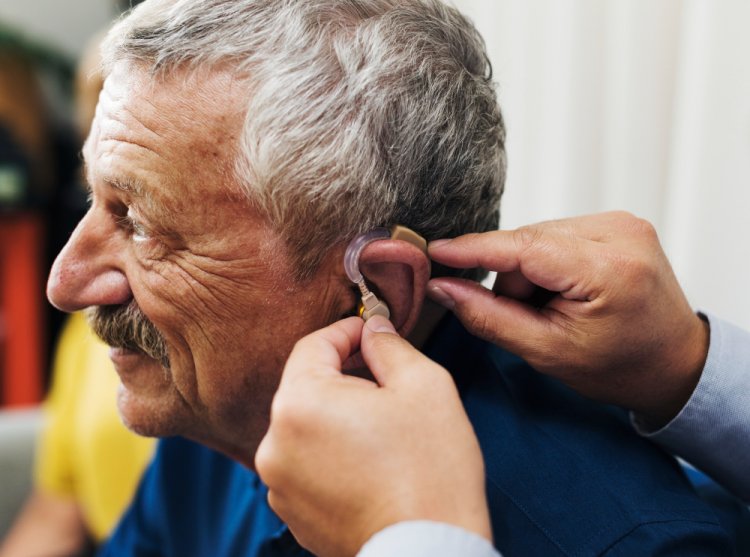From Frequencies to Thresholds: Demystifying Audiometry
Audiometry stands as a cornerstone in the realm of audiology, serving as a vital instrument for assessing hearing acuity and pinpointing auditory deficiencies. This comprehensive exploration aims to delve deeply into the intricacies of audiometry, elucidating its fundamental principles, procedural intricacies, result interpretation, and paramount significance within clinical practice.

Defining Audiometry
Audiometry, at its core, entails the precise quantification of hearing sensitivity across a spectrum of frequencies and intensities. It relies upon specialized apparatus known as an audiometer, meticulously engineered to emit pure tones at varying frequencies and decibel levels. By presenting these tones to the individual being tested, audiologists discern their auditory thresholds, namely, the faintest sounds perceptible at each frequency.
Principles Underpinning Audiometry
The bedrock of audiometry rests upon the principles of psychoacoustics, delving into the intricacies of sound perception. The human auditory apparatus exhibits sensitivity to a broad gamut of frequencies, typically spanning from 20 Hz to 20,000 Hz, albeit subject to individual variance. Audiometry meticulously probes this frequency spectrum, gauging hearing sensitivity by ascertaining the threshold of audibility—essentially the lowest intensity at which a sound becomes perceptible.
Audiometry Procedure: A Systematic Approach
The audiometric procedure unfolds in a systematic fashion, commencing with a comprehensive case history to glean insights into the patient's medical background, noise exposure history, and subjective auditory complaints. Subsequently, audiologists administer a battery of tests utilizing the audiometer. These tests may encompass pure-tone audiometry, speech audiometry, tympanometry, and otoacoustic emissions testing, tailored to the patient's age, presenting symptoms, and clinical requisites.
Pure-Tone Audiometry
Pure-tone audiometry entails the subject donning headphones or inserts, with pure tones projected at varying frequencies and intensities. The subject signifies auditory perception by responding—typically via button press or hand raise—upon detecting each tone. The audiologist meticulously records the softest intensity at which the subject responds for each frequency, thereby generating an audiogram—a graphical depiction of the subject's auditory thresholds.
Speech Audiometry
Speech audiometry scrutinizes the subject's capacity to comprehend speech across varying intensity levels. Tympanometry assesses eardrum mobility and middle ear pressure, while otoacoustic emissions testing evaluates cochlear function by gauging emitted sound in response to stimuli.
Deciphering Audiometry Results
Deciphering audiometry results necessitates adeptness and a nuanced comprehension of normative auditory thresholds and patterns of hearing impairment. In a normal audiogram, thresholds typically fall within the range of 0 to 20 decibels (dB) across frequencies. Hearing impairment can be categorized as conductive, sensorineural, or mixed, contingent upon the affected auditory segment.
Normal Results
Normal hearing is characterized by thresholds within the 0 to 20 dB range across frequencies. This indicates that the individual has no significant hearing impairment and can detect sounds across the entire frequency spectrum.
Abnormal Results
Abnormal audiometry results may indicate hearing loss. Conductive hearing loss ensues from impediments within the outer or middle ear, impeding sound transmission to the inner ear. Sensorineural hearing loss arises from inner ear (cochlear) or auditory nerve damage, impairing sound signal processing. Mixed hearing loss encompasses a blend of conductive and sensorineural elements.
Significance of Audiometry in Clinical Practice
Audiometry plays a crucial role in diagnosing hearing loss, tracking auditory status longitudinally, and devising tailored management strategies. Timely identification of hearing impairment is imperative, facilitating the implementation of interventions such as hearing aids, cochlear implants, auditory rehabilitation, or surgical/medical interventions as warranted.
In addition to diagnosing hearing loss, audiometry finds application across diverse clinical domains encompassing pediatric audiology, geriatric audiology, occupational audiology, and forensic audiology. Moreover, it serves as a linchpin in research endeavors exploring auditory function, noise-induced hearing loss, and intervention efficacy.
In conclusion, Audiometry epitomizes a cornerstone within audiological practice, furnishing invaluable insights into auditory acuity and pathology detection. Profound comprehension of its underlying principles, procedural nuances, and result interpretation augments healthcare practitioners' ability to navigate patient care judiciously. As technology burgeons and research strides forward, the landscape of audiometry stands poised to evolve, fostering enhanced outcomes for individuals grappling with auditory challenges.
#Audiometry #HearingTest #HearingSensitivity #Audiogram #HearingAssessment #HearingLossDiagnosis #Audiology #PureToneTesting #ComprehensiveAudiometryGuide #UnderstandingHearingThresholds #InterpretingAudiometryResults #SignificanceOfAudiometryInHealthcare #HowToConductPureToneAudiometry #ConductiveAndSensorineuralHearingLoss #ClinicalApplicationsOfAudiometry #EarlyHearingLossDetection
Disclaimer:
The information provided in this article is for educational purposes only and should not be considered medical advice. If you have any health concerns or are experiencing symptoms, it is important to consult with a healthcare professional, such as a doctor or clinic, for proper diagnosis and treatment. Always seek the advice of your doctor or other qualified health provider with any questions you may have regarding a medical condition. Do not disregard professional medical advice or delay in seeking it because of something you have read in this article.
What's Your Reaction?





















